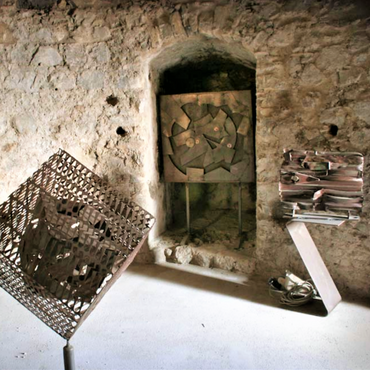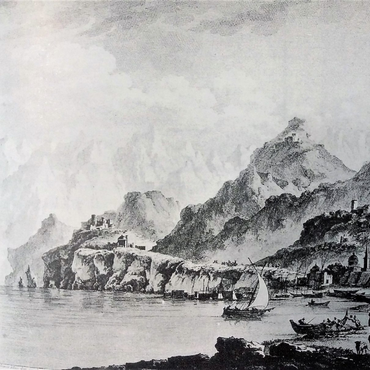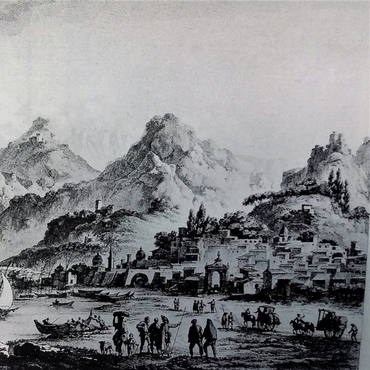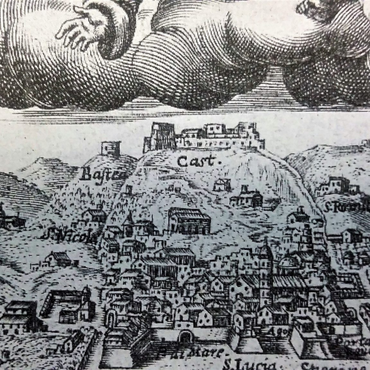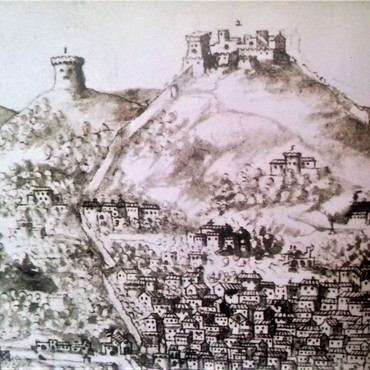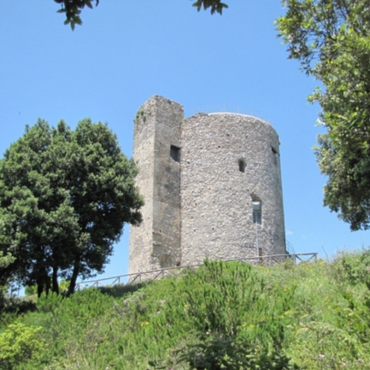The Bastille
The watchtower of Salerno
The Bastille was built in Norman times and has a crucial strategic military purpose. Is a large cylindrical tower, placed higher up and not far from the Castle, with the function of overseeing. From its position it’s able to signal even the less visible movements from the fortress. Its structure is reinforced on the eastern side by a half crown. Inside, a single compartment. The access door is located far above the ground level, therefore getting into it requires removable support such as a long ladder.
È importante ricordare il volume di viaggi nell’Italia meridionale del francese Richard de Saint Non, con una pittoresca acquaforte realizzato da Claue Louis Chatelet del 1753, dove è possibile intravedere la Bastiglia nei pressi del Castello, e l’incisione su cartoncino di Eugenio Ciceri del 1856, presente nella raccolta “Vues d’Italie”, nella quale è possibile osservare la parte alta di Salerno vista da ponente, i ruderi del Castello e in lontananza la figura della torre di guardia.
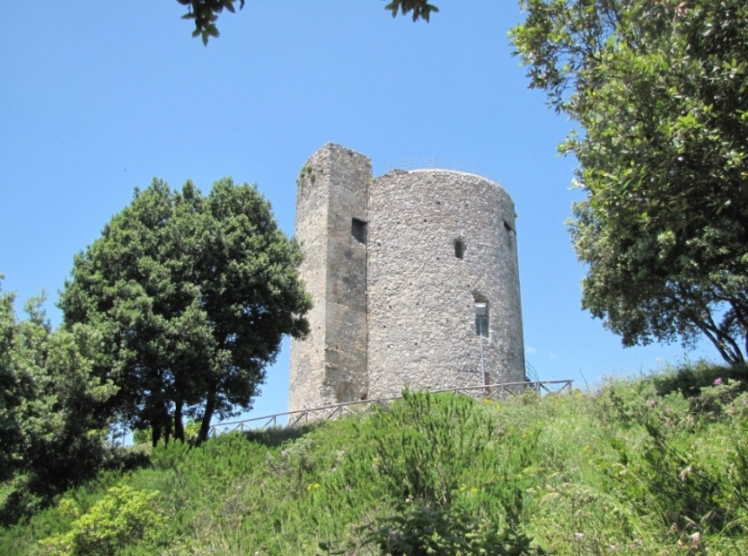
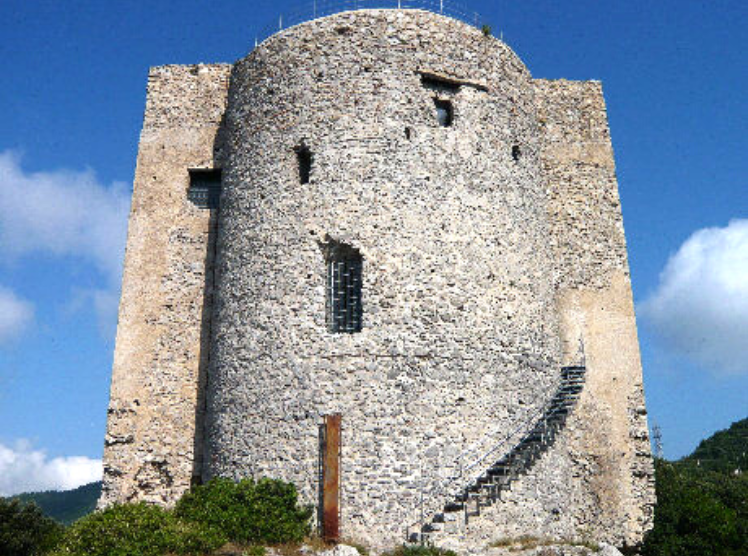
Curiosity and history: representations of the tower over the centuries
The denomination of "Bastille" would be due to a misunderstanding, since initially it was believed that the building was a prison, which was placed instead inside the Castle of Arechi. There are several representations of the tower over the centuries. The first dates back to the end of the fifteenth century and pictures an almost fairy-tale image, dating back to the Aragonese era, present in a miniature of the Chronicle of Ferraiolo (Pierpont Morgan Library of New York).
Another representation is located within the collection of images of the city, as a result of a journey of the Augustinian monk Angelo Rocca (Angelica Library in Rome), where it’s possible to see the Bastille (indicated with the number 1) which rises above the palaces, churches and monasteries of the city of Salerno. In the famous image by Scipione Galiano of "Salerno besieged by the French" in 1653, the tower is named “Bastea”.
During the 18th and 19th centuries there were numerous representations of the defensive system, however in the 19th century it was not always present within the panorama. It is important to remember the volume of travels in southern Italy by the Frenchman Richard de Saint Non, with a picturesque etching made by Claue Louis Chatelet in 1753, where it’s possible to glimpse the Bastille near the Castle, and the engraving on cardboard by Eugenio Ciceri of 1856, present in the collection "Vues d'Italie", in which it is possible to observe the upper part of Salerno seen from the west and the ruins of the Castle and in the distance the figure of the watchtower.

